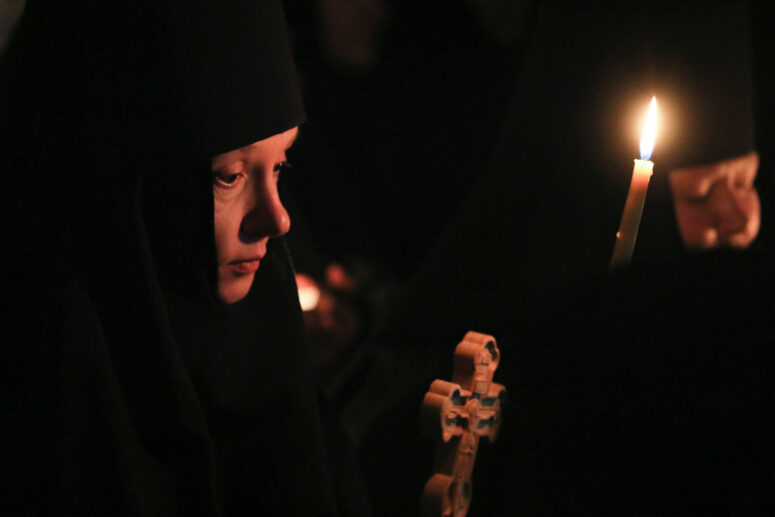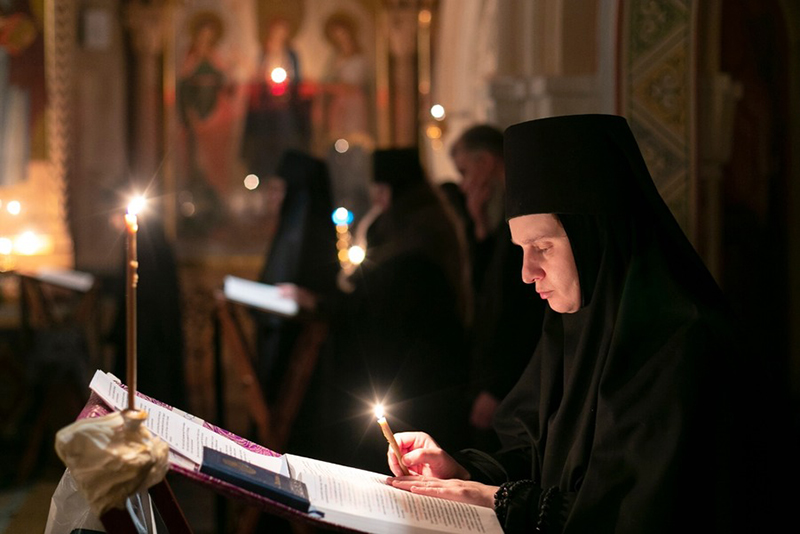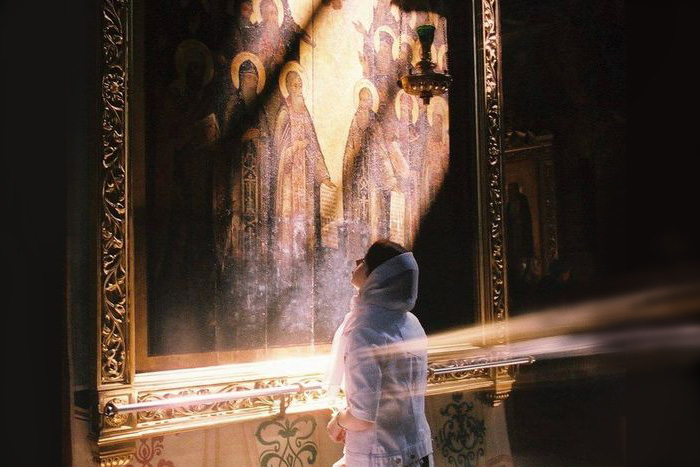
In the Orthodox Church, taking monastic tonsure means changing one’s name. For example, Saint Seraphim of Sarov bore the name Bartholomew before he became a monk. So why do monks change their names, and who gets to choose the new name? Find the answers below.
Why do monks change their names?
Tonsured monks die for the world and their past life. The giving of the baptismal name signifies the beginning of a new life in the spirit. Receiving a new name at tonsure has the same meaning. As in the Holy Baptism, a monk receives an additional patron saint upon tonsure (who does not replace the patron saint he acquired at baptism. A monk dies for the world and takes a new name; likewise, he says farewell to his secular surname. Therefore, the surname of a monk is always written in brackets.
This custom goes back to the Old Testament times. The Lord Himself gave new names to the people He chose as His righteous disciples. For example, Abram was renamed Abraham, and Jacob came to be called Israel.
There are three stages of monasticism: the Ryasophore, the small schema, and the great schema.
Technically speaking, the Ryasophoro is not a degree of monasticism in the full sense, as it does not require a monk to take monastic vows. Still, some monasteries have the custom to give monks new names after tonsure to the Ryasophora. This practice has existed for many centuries. It was first documented among the Greeks in the XII century, and in the 17th century among the Russian monks.
Since the 17th-century church reform under Patriarch Nikon, all monks must take new names upon tonsure to the small schema. The rule existed before the reform, but it had exceptions. For example, the Venerable Monk Theodosius of the Caves did not change his name in monasticism.
The change of name after tonsure to the Great Schema was considered an alien practice before Nikon’s reforms. But the drive to unify Greek and Russian church practices made this custom a required part of Russian monastic life.
Today, monastics can change their names up to three times, while in the ancient Church this happened only once. But the practices of the Ancient Church are almost non-existent.
Who gets to choose the name?
As a rule, it is the decision of the bishop or the Hegumen. As an exception, the new name can be given with the blessing of the archbishop (where the tonsure is performed by the Hegumen), or the Patriarch (where the tonsure is performed by the bishop).
The tonsured monk may indicate his desired new name to the tonsuring hierarch, but the hierarch does not have to listen.
Sometimes, the name may be chosen by drawing lots. For example, Gerontius Lakomkin (named Gregory in the world) received his name in this way. The diocese selected the name German, the monk himself asked to be tonsured as Guriy, and the tonsuring bishop suggested the name Gerontius. The names were written on three notes, they were placed on the Holy Gospel, and the monk was asked to draw one.
The guiding principle for the choice of names in monasticism
By the 15th century, two principles had taken precedence: closeness to the baptismal name, or choosing the name from the church calendar. The name after tonsure could start with the same letters as the name at baptism, or they may sound alike. For example, a monk baptised as Paisius could be tonsured as Parphenius, or Peter – could be tonsured as Paul.
Saint Sergius of Radonezh, Bartholomew in the world, received the name Sergius because he took tonsure on the feast day of Saints Sergius and Bacchus.
As mentioned before, the priest performing the tonsure has the final word in choosing a name, and he has no obligation to follow any tradition or principle. For example, the bishop who tonsured Metropolitan Evlogii (Georgievsky) named him in honour of his friend.
Some specific rules apply to the choice of a name at the tonsure to different degrees of monasticism.

The Ryasophore
As mentioned earlier, the practice of giving a Ryasophora mon a new name came to the Russian Church from Greece, albeit with several modifications.
In Greek Church, one could become a Ryasophore monk by tonsure, or by the rite of Ryasophora ordination. A new name was given in all cases, tonsure or no tonsure.
In the Russian Church, the rite of ordination was uncommon, but a new name could not be given otherwise than by tonsure. Furthermore, the practice of changing the name at the tonsure to the Ryasophora never became ubiquitous.
The Small Schema
Where the name after the tonsure to the Ryasophora was chosen by its closeness to the baptismal name, then the same principle should apply to the choice of the name for the small schema tonsure: it must sound similar to the name given at the Ryasophora tonsure.
The Great Schema
Likewise, the name with which a monk is tonsured into the Great Schema should sound the same as the name in the Small Schema. Yet the practice of name change in the Great Schema is uncommon in the Russian Church. It came from the Greek Church, but even in Greece, it did not become universal until the 15th century.
Surprisingly, it was not uncommon for some monks to return to their baptismal names after tonsure to the Great Schema. The Venerable Job of Pochaev, whose baptismal name was John, was tonsured with this name to the Great Schema. This practice, however, raises the question: if the name change in the acquisition of another patronal saint, then who is the patronal saint of the monk who reverts to his baptismal name: the one at baptism, or some other saint by that name? The question still has no definitive answer.
The ancient tradition to keep at the tonsure to the Great Schema the name received at the tonsure to the Small Schema survived for many centuries. For example, the venerable Paisios (Velichkovsky) kept his small schema name after tonsure to the great schema.
Frequently, monks take tonsure to the great schema in sickness or anticipation of their imminent departure. For example, Bishop Seraphim (Zaliznitsky) took the Great Schema in 2003 with the name Sergius. He recovered and wished to be relieved of the great schema to continue his episcopal service, impossible for a monk in the great schema. In 2007, his request was granted, and he returned his small schema name.
Unfrocking and return to the worldly name
In the event of unfrocking, voluntary or involuntary (e.g. for the commission of an act incompatible with monasticism) a monk returns to his worldly name and loses the right to be called by his monastic name.
If an unfrocked monk repents and wishes to return to the monastery, he will be asked to complete a probationary period; if successful, he will regain the right to be called by his monastic name and wear vestments. If the monk had priestly ordination and was defrocked, he can return to monasticism, but not to priestly service.
Addressing a monk by his worldly name is disrespectful of his monastic status. Hostile clergy addressed Metropolitan Michael of Kiev by the diminutive version of his worldly name, intending to insult him.
Conclusion
The taking of a new name after monastic tonsure is a universal monastic practice that has become essential to being a monk. The number of name changes depends on the tradition of a particular church; yet the significance of the practice is universal: the complete renunciation by the tonsured monk of his former life in the world and the beginning of a new life in the Spirit.





